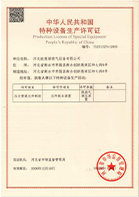
Sep . 23, 2024 12:08
Back to list
Pressure Reduction Station Design and Optimization Strategies for Efficient Gas Management
Understanding Pressure Reduction Stations in Natural Gas Distribution
Pressure reduction stations (PRS) play a crucial role in the natural gas distribution network, ensuring that gas is delivered safely and efficiently to consumers. These stations are designed to reduce the high-pressure gas from the transmission pipelines to the lower pressures needed for local distribution systems. This article delves into the functions, benefits, and operational aspects of pressure reduction stations.
Functionality of Pressure Reduction Stations
The primary function of a PRS is to decrease the pressure of the natural gas before it enters the local distribution system. High-pressure gas is transported through large transmission lines, which can operate at pressures of up to 1,500 psi (pounds per square inch) or more. However, local distribution networks typically require pressures between 5 to 60 psi for safe and efficient delivery to homes and businesses.
To achieve this pressure reduction, a PRS consists of several key components
1. Pressure Regulators These devices control the pressure of the gas as it flows through the station. They adjust the output pressure based on the demand and can automatically respond to fluctuations in the system. 2. Safety Devices Safety is paramount in gas distribution. PRS are equipped with various safety features, such as pressure relief valves, to prevent over-pressurization and ensure the safe operation of the distribution system.
.
4. Odorization Systems Natural gas is odorless in its pure form, so odorants are added at PRS to help detect leaks. The presence of a distinct smell acts as an early warning sign for potential gas leaks.
محطة تخفيض الضغط

Benefits of Pressure Reduction Stations
PRS provide numerous advantages to both the gas supply infrastructure and consumers
- Safety By regulating the pressure of the gas, they reduce the risk of accidents and ensure that the gas is delivered safely to consumers.
- Efficiency PRS help maintain a consistent supply pressure, which enhances the efficiency of the distribution system. This consistency is crucial for industrial applications that require precise gas pressures for production processes.
- Flexibility The ability to adjust pressures based on real-time demand allows for better management of supply and can mitigate the impact of peak usage times.
Conclusion
In summary, pressure reduction stations are vital components of the natural gas distribution system. They ensure that gas is delivered at the correct pressure, enhancing safety and efficiency for end-users. As the demand for natural gas continues to rise, the importance of maintaining and optimizing these facilities will become increasingly paramount. Investing in the technology and infrastructure of PRS will be crucial in ensuring sustainable and reliable energy distribution in the future. Through ongoing advancements, the operation of pressure reduction stations will adapt to meet the challenges and demands of a growing energy market.
Latest news
-
Safety Valve Spring-Loaded Design Overpressure ProtectionNewsJul.25,2025
-
Precision Voltage Regulator AC5 Accuracy Grade PerformanceNewsJul.25,2025
-
Natural Gas Pressure Regulating Skid Industrial Pipeline ApplicationsNewsJul.25,2025
-
Natural Gas Filter Stainless Steel Mesh Element DesignNewsJul.25,2025
-
Gas Pressure Regulator Valve Direct-Acting Spring-Loaded DesignNewsJul.25,2025
-
Decompression Equipment Multi-Stage Heat Exchange System DesignNewsJul.25,2025

